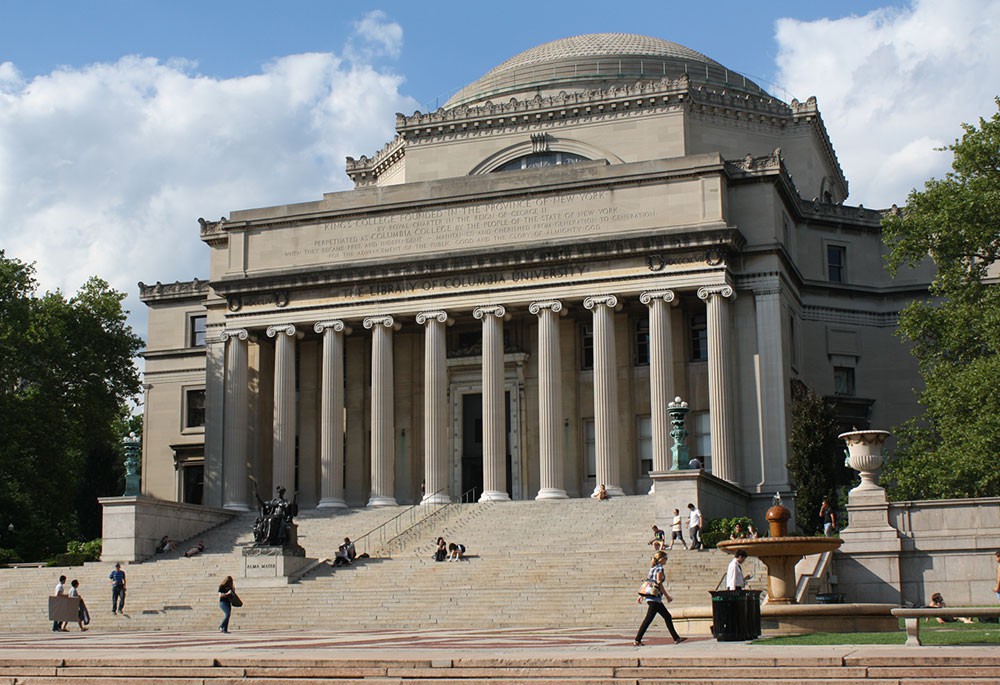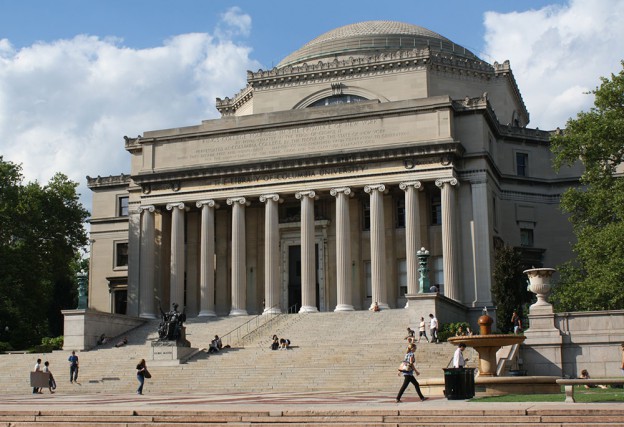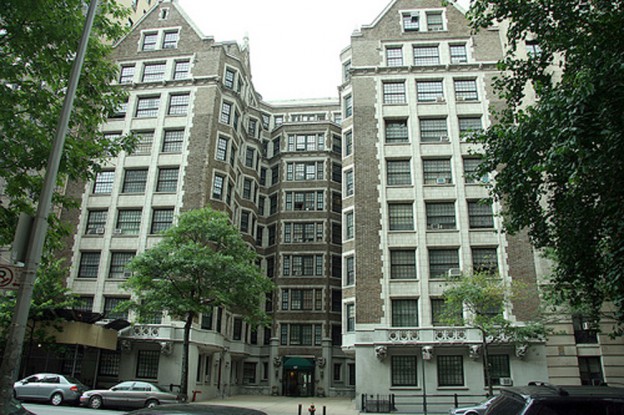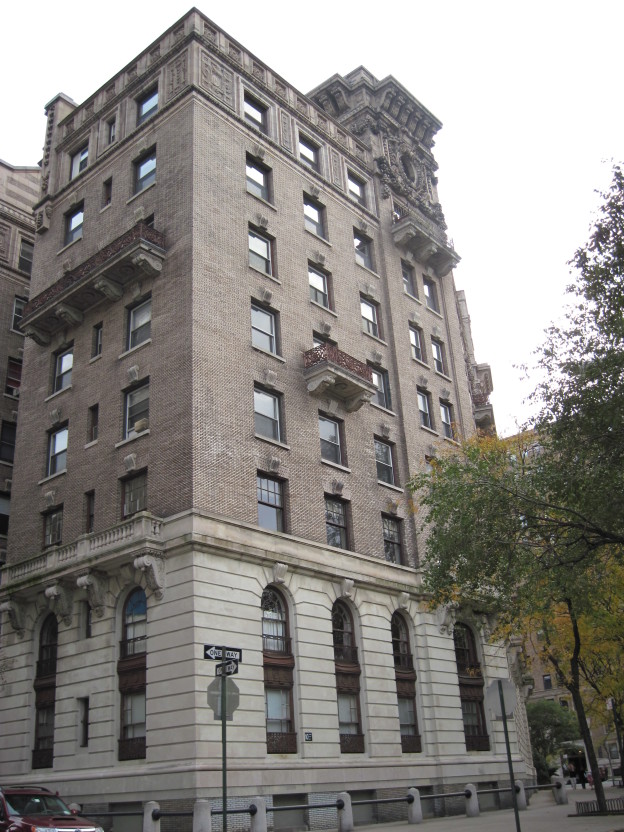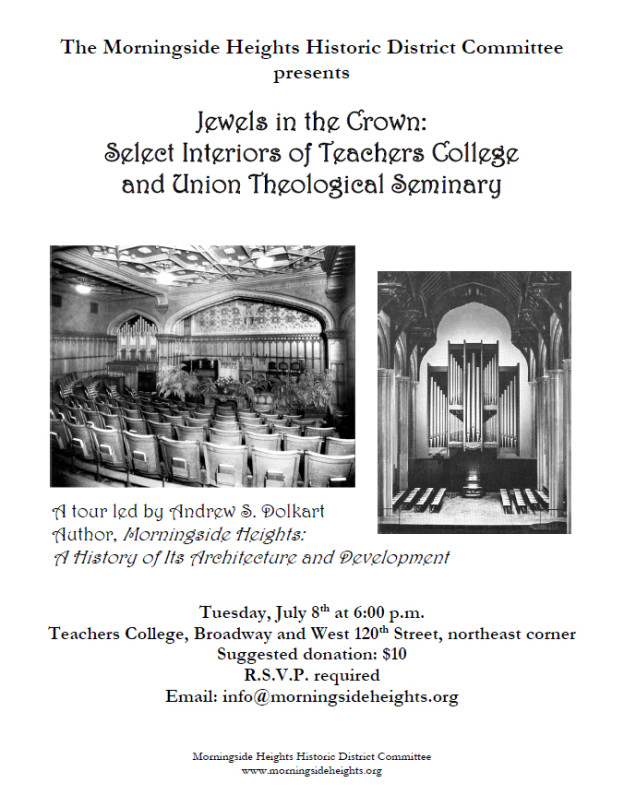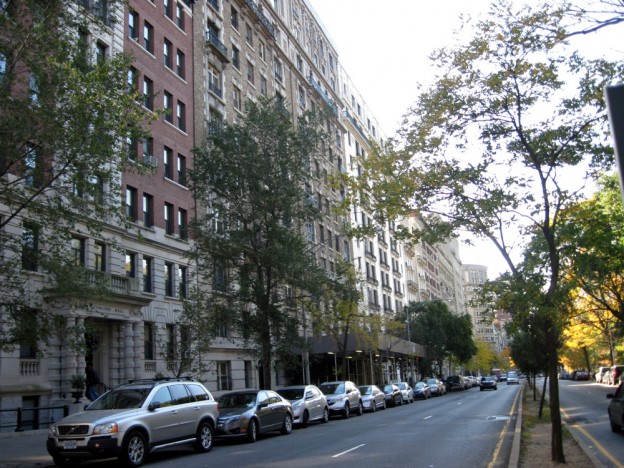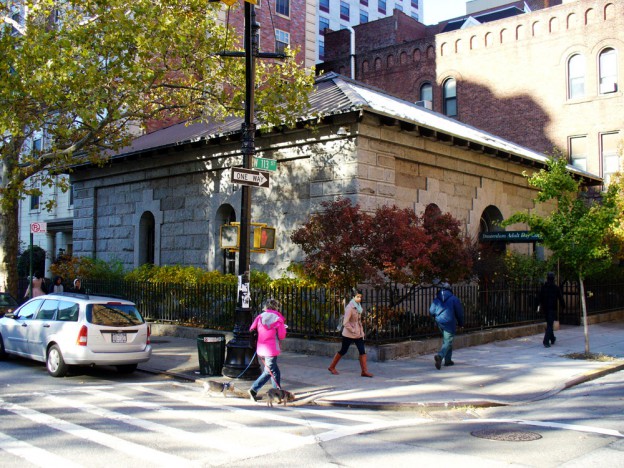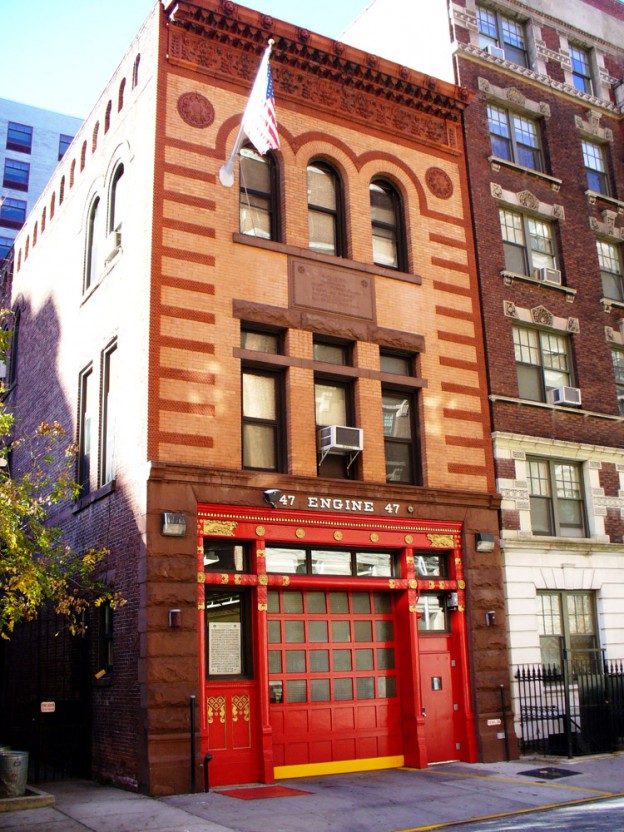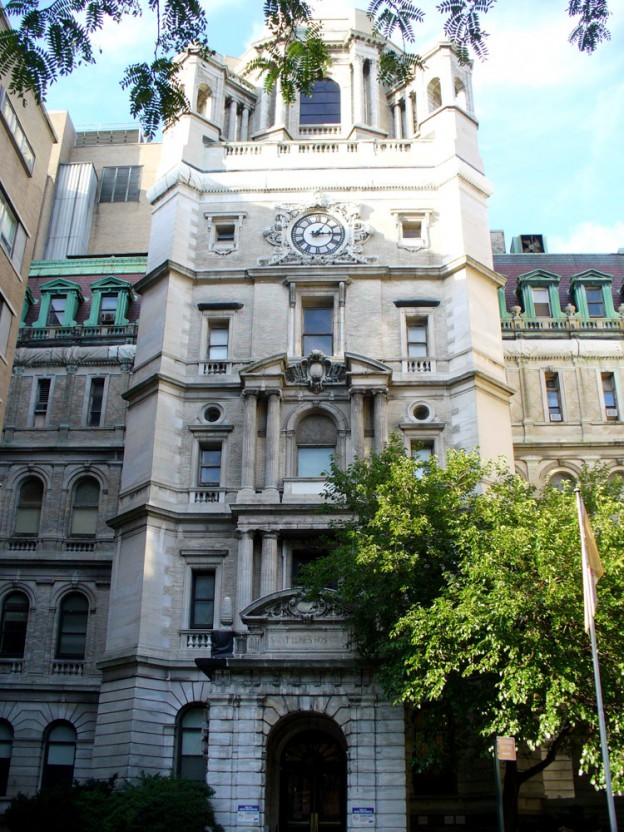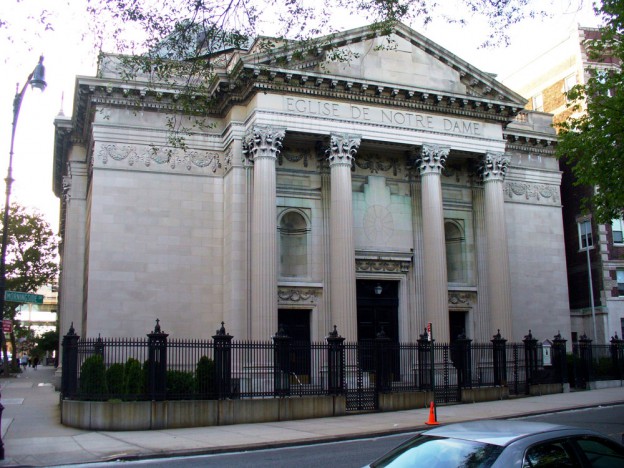Morningside Heights is graced with the highest concentration of institutional complexes built in a relatively short period at the turn of the 20th century, both in the city and anywhere in the United States. It is home to monumental places of worship, higher learning and healing, which accentuate its backdrop of rowhouses and apartment buildings, culminating in streetscapes that are both elegant and eye-filling. Topographically, it is situated on a plateau historically known as Harlem Heights, while geographically it is bounded by West 110th Street to the south, West 125th Street to the north, and two Frederick Law Olmsted–designed parks to the east (Morningside Park) and to the west (Riverside Park).
Morningside Heights was calendared by the Landmarks Preservation Commission in September 2016 and had a public hearing on December 6, 2016.
To learn more about Morningside Heights click here
527 West 110th Street;
Waid and Waller, 1909|
This grand apartment house was designed in the style of an Elizabethan manor house and resembles England’s famed Hardwick Hall, which was described as having “more glass than wall” due to its numerous windows. The building features projecting bays, steep gables, multi-colored brickwork, and limestone and terra cotta trim.
Jewels in the Crown: Select Interiors of Teachers College and Union Theological Seminary
Tuesday, July 8th at 6:00 p.m.
Teachers College, Broadway and West 120th Street, northeast corner
Suggested donation: $10
R.S.V.P. required
Email: info@morningsideheights.org
http://morningsideheights.org/amazing-tour-of-morningside-heights-jewels-july-8-2014/
What do Riverside Church,
Union Theological Seminary
and
Jewish Theological Seminary have in Common?
Come and find out! The Morningside Heights Historic District Committee Invites you to a forum with NYC historian, Jim Mackin, to give you the unique and fascinating history of why three such important institutions chose to build in Morningside Heights, essentially side by side.
Thursday, May 1st
7pm-8:30 pm
Riverside Church
Room 10T
(19 Claremont Ave at W 120th Street)
Suggested donation $10
For more information: Morningsideheights.org
.
Amsterdam Avenue at West 113th and 119th Streets;
Unknown Architect, 1870–73;
West 119th St.: New York City Individual Landmark|
The Croton Aqueduct was constructed in 1835–42 as the city’s first fresh water system, delivering water via a raised platform along Amsterdam Avenue. When the system was moved below ground, these granite pumphouses powered the water flow through the underground pipes.
500 West 113th Street;
Napoleon LeBrun & Sons, 1889–91;
New York City Individual Landmark|
In the late 19th century, the city’s fire services extended to Upper Manhattan through the construction of new firehouses. This Romanesque Revival firehouse, characterized by a highly ornamental façade of yellow brick, brownstone, terra cotta and cast-iron, was one of many designed by the firm of Napoleon LeBrun & Sons.
Amsterdam Avenue to Morningside Drive, West 114th to West 115th Streets;
Ernest Flagg, 1893;
Plant & Scrymser Pavilion for Private Patients: New York City Individual Landmark|
The hospital’s original design consisted of nine marble-clad pavilions with a central domed pavilion set back from 113th Street by a small courtyard. Its symmetrical Renaissance style bears much resemblance to the Luxembourg Palace in Paris. Due to lack of funds, some pavilions were simplified and not completed until much later. In the mid 20th century, alterations included the demolition of two pavilions along Amsterdam Avenue and removal of the central dome.
405 West 114th Street;
Daus & Otto, 1910; Cross & Cross, 1914;
New York City Individual Landmark;
State and National Registers of Historic Places|
This French Neo-Classical church was donated by Geraldine Redmond after her son was cured at the famous pilgrimage site and sanctuary at Notre Dame de Lourdes in France. Its interior grotto recalls the grotto of its namesake.
Roughly between Morningside Drive and Morningside Avenue, West 110th to West 123rd Streets;
Park: Frederick Law Olmsted & Calvert Vaux, 1883–95;
Statue: Karl Bitter & Henry Bacon, 1912;
New York City Scenic Landmark|
Morningside Park was an early city initiative to create an amenity out of undevelopable land. It is comprised of a narrow strip extending from West 110th to 123rd Streets and encompasses the dramatic escarpment which gives credence to “The Heights.” The park’s tiered design incorporates the land’s natural topography with a mix of picturesque and pastoral landscapes. The promenade on Morningside Drive features observation platforms, imposing stone steps and a statue of social reformer Carl Schurz.
